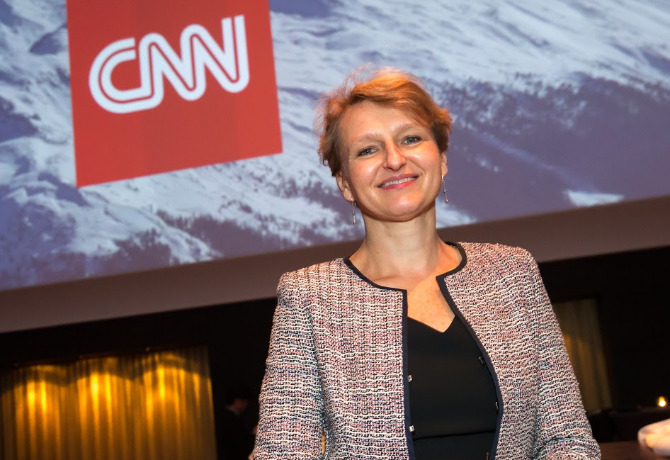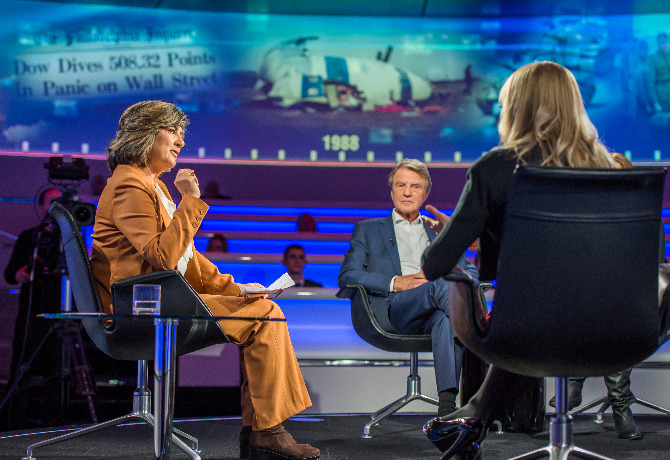As CNN International celebrates 30 years of broadcasting, M&M Global asks ad sales chief Petra Malenicka (pictured, below) about how the media owner’s relationship with advertisers has changed.
Over 30 years have passed since Ted Turner took his 24-hour cable news channel global with the launch of CNN International (CNNI).
Initially little more than a simulcast of its US news network, CNNI helped to usher in a new era of international media, offering brands to chance to target US travellers outside the country.
By 1991 it was broadcasting regularly from its London bureau, and by 1993 CNNI had amassed a global audience of 60 million – equalling the total watching back home in the States. A year later, CNNI reached Asia Pacific, and in 1997 it announced the regionalisation of the network, attempting to offer locally-relevant content.
Numerous innovations have come and gone since then, from its first mobile news service – CNN Mobile – in 1999, to its first Asian-language website in 2000.
To celebrate its thirtieth anniversary, chief international correspondent Christiane Amanpour hosted a special broadcast, ‘CNN 30: Three Decades That Changed Our World’.
The debate, filmed at McLaren’s Thought Leadership Centre, highlighted moments in world history from the past three decades, and looked ahead to what the next 30 years might hold.
Panellists included scientist Baroness Susan Greenfield and French politician and co-founder of Médecins Sans Frontière Bernard Kouchner, while the audience almost entirely comprised millennials who were born after CNN reached an international audience.
But how have things changed commercially since CNNI first began running international ad campaigns? M&M Global spoke to Petra Malenicka, the broadcaster’s senior vice president, ad sales, Europe and Americas, and asked about evolving client demands, as well as CNN’s new video content play, Great Big Story.
M&M Global: Congratulations on reaching 30 years of CNNI. From a commercial perspective, how have relationships with advertisers changed?
Malenicka: “I’ve been here since 2004, so 11 years. It has been a very exciting journey. There have been a lot of things changing, which makes our job so fascinating, but also things that haven’t changed. For advertisers and media owners, associating themselves with a strong brand with relevant, premium content, and being able to tap into scale, these have been important throughout all the years.”
What is the most important thing advertisers are looking for in their media partners today?
“Engagement is the thing that has evolved. It is the word that we hear about most. We set up a brand studio 10 years ago, anticipating the trend of how important branded and native content would be for brands and viewers. To be able to express the values and knowledge of the brand, and the expertise, alongside relevant content, has become extremely important.
“This is something you see growing on digital, but digital is not the only platform. The briefs and deals are driven by digital, but our multi-platform strategy is extremely important. Digital-driven doesn’t mean digital-only; TV is there to bring the scale and to remain the brand-builder. Each screen has its function, and brands are sophisticated enough to look for a combination of these screens.”
Give us an example of how CNNI is working differently with a brand.
“Our bread and butter, really, is in the multi-platform strategy. DHL is an example of a brand that has been with CNN for several years, but at a very different scale. We started with a very small campaign. Then, as content has become so important, we have moved from classic advertising to much more of a sponsorship and native model; advertising that is much more connected to what the brand wants to accomplish. It’s something that, in terms of sophistication, we could only really have done this year – certainly not 10 years ago.”
How are you seeing the shift in importance from local to international content, and vice versa?
“On CNN, the majority of communication is brand communication – it’s not product communication. As an advertiser, or a government promoting a country, you might have the same thing to say across several markets, and it is certainly more effective to go across pan-regional media. That has worked for all those years, and it remains cost-effective. If you want to go multi-local, that is where digital comes into the question.”
“It may be online video, but it’s not VICE, it’s not BuzzFeed. It is quality video for intelligent, urban millennials that are after quality that is shareable”
What are the aims of CNN’s new video content service Great Big Story?
“It’s our way to speak to the new generation, to millennials. It’s a way to evolve the storytelling, so it is adapted to the target audience. It’s about storytelling, it’s mobile-first but not mobile-only platform. It is also the first launch of a CNN platform that does not carry CNN’s name, but it still conveys the fundamental values we have in the company, which is building a strong brand and having strong content.
“It may be online video, but it’s not VICE, it’s not BuzzFeed. It is quality video for intelligent, urban millennials that are after quality, but quality that is shareable and is adapted to their consumption pattern. The way advertisers are a part of the game is through storytelling. You won’t see any pre-rolls, you won’t see any classic advertising. That is not the way millennials would consume media. They want to engage with media and brands, but in a very natural way.”
Casting your eye to the future, when CNNI is perhaps celebrating its sixtieth anniversary, what is likely to change between now and then?
“The fundamentals will remain. You have many media brands operating in the market, with different levels of quality of content. Finding a strong brand with reliable content, and a scale that can offer access to people they want to target, will be so important.
“We will be getting into more sophisticated approaches, and brands will need to differentiate themselves, to deliver real value to consumers. We will see more smart solutions that stand out from the competition, whether digitally-driven, socially-driven, mobile-driven, or probably a combination of all of those.
“It depends on where you can engage most, and where is most natural for your brand.”










